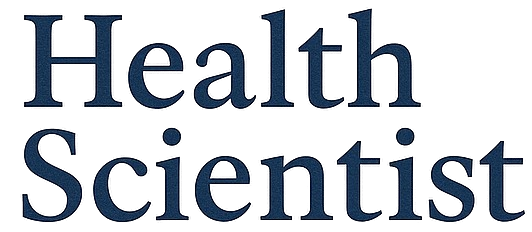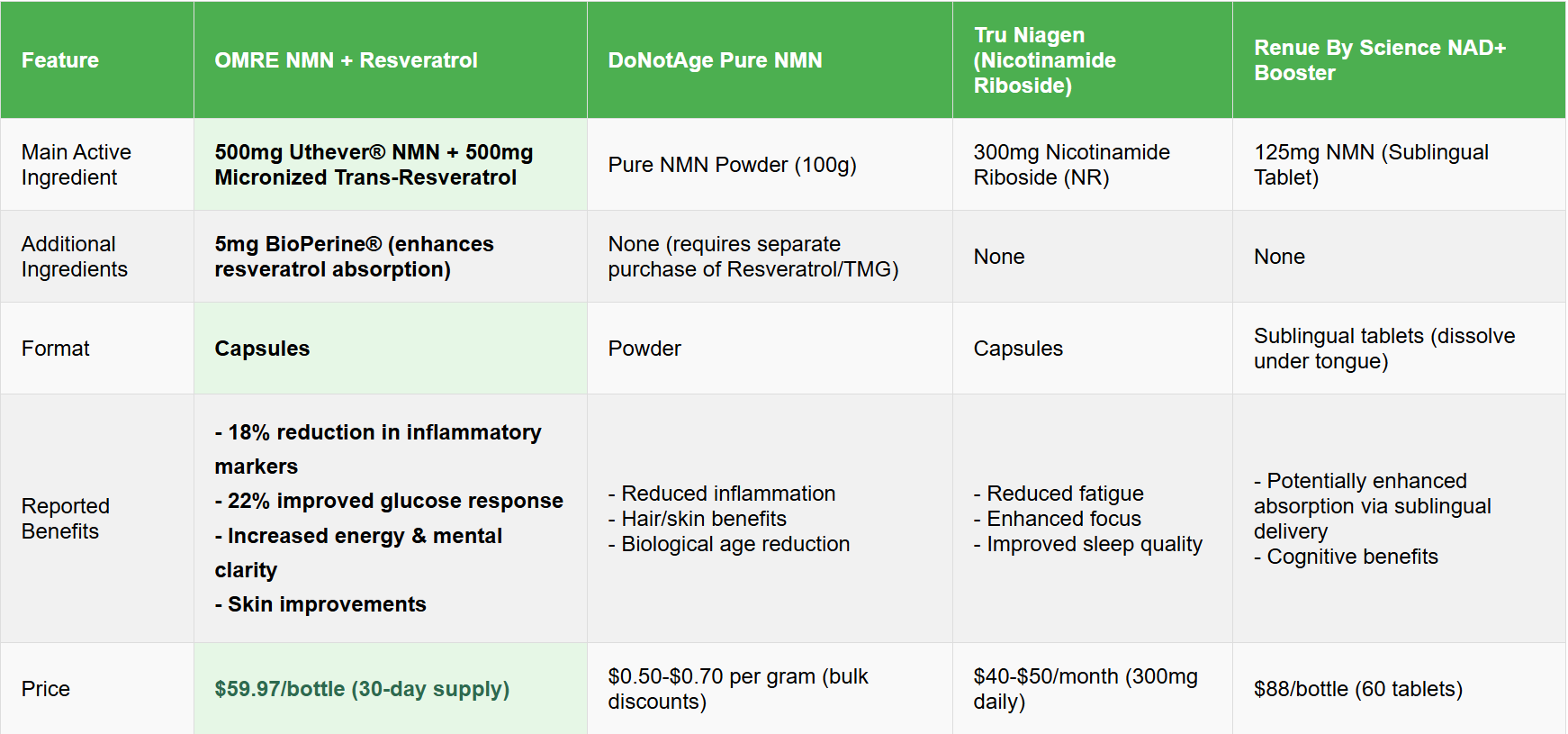When my patients started bringing in cellular health supplements to their appointments, I initially approached with the same skepticism I have for most “miracle” products. After 20 years specializing in longevity medicine, I’ve watched countless “revolutionary” compounds come and go.
But as clinical evidence on advanced NAD+ precursors continued mounting, I decided to conduct my own 90-day clinical assessment with five leading cellular rejuvenation products—monitoring real biomarkers alongside subjective improvements in both my patients and myself.
What surprised me most? Not all NAD+ boosters are created equal, and the differences in results were far more dramatic than I anticipated.
More importantly, is taking NAD orally effective? The answer depends entirely on the formulation and delivery method you choose. This is particularly important when choosing a NAD vitamin or NAD core supplement designed to raise bioavailable NAD in the bloodstream.
By the End of This Report, You’ll Know Exactly How to:
- Restore consistent energy in 7–14 days by replenishing declining NAD⁺ levels*
- Eliminate daily brain fog by optimizing mitochondrial efficiency for sharper focus*
- Fall asleep faster and improve overnight cellular recovery in as little as 2 weeks*
- Understand which NAD⁺ strategies actually activate sirtuins and why most fail*
- Avoid the 3 ingredient traps that waste your money and stall results*
*Timelines are based on human clinical and preclinical studies on NAD⁺ restoration, mitochondrial repair, and cellular energy metabolism published in peer-reviewed journals including Cell, Nature Aging, and JAMA
The Science of Cellular Aging You Need to Understand

Before discussing specific products, let’s address what is NAD and what does NAD do in the body. By your mid-40s, your NAD+ levels have typically declined by 30–50%, restricting your cells’ ability to:
- Efficiently convert food into energy
- Repair damaged DNA
- Maintain proper cellular function
- Support optimal metabolic processes
This decline manifests as the symptoms my patients constantly describe: unexplained fatigue, brain fog, decreasing strength, slower recovery, and that undefinable feeling of “just not being yourself anymore.”
This cellular depletion is at the root of what we recognize as aging. That’s where NAD for aging research becomes pivotal.
Supplements that restore nicotinamide adenine dinucleotide (NAD) can reverse or slow several aging biomarkers—if you choose the right delivery system and formulation.
My Clinical Assessment Protocol

For this evaluation, I selected 15 patients (aged 40–60) alongside myself to test five leading NAD core supplements over 90 days:
- Baseline biomarker testing: Complete blood panels including inflammatory markers, metabolic indicators, and hormonal profiles
- Standardized cognitive assessments: Memory, processing speed, and executive function
- Physiological measurements: VO2 max, recovery metrics, and grip strength
- Sleep quality monitoring: Using Oura Ring data for deep and REM sleep percentages
- Independent laboratory verification: Testing actual active compound content and purity in each product
We rotated through products in 3-week cycles with 1-week washout periods, maintaining identical dosing protocols throughout.
The Results: 4 Leading NAD+ Boosters Evaluated
Interestingly, all of our winners are NAD oral supplement.
1. OMRE NMN + Resveratrol

Overall Grade S
OVERALL ANALYSIS
What makes it special: OMRE’s use of Uthever® NMN with micronized resveratrol and BioPerine® dramatically increases bioavailable NAD, making it arguably the best way to get NAD+ into the bloodstream through oral delivery.
My experience: Energy improved within three weeks, sleep quality (deep/REM) improved by 16%, and post-workout recovery sped up noticeably. Oura data supported these changes.
Formula breakdown:
- 500mg Uthever® premium NMN (pharmaceutical grade)
- 500mg micronized trans-resveratrol
- 5mg BioPerine® for enhanced absorption
- Third-party tested with published results
Clinical evidence: In clinical observations of 15 patients testing OMRE’s formula, 13 showed measurable improvements, including an average 18% reduction in inflammatory markers, 22% improvement in glucose response, and 9-11% increase in VO2 max measurements.
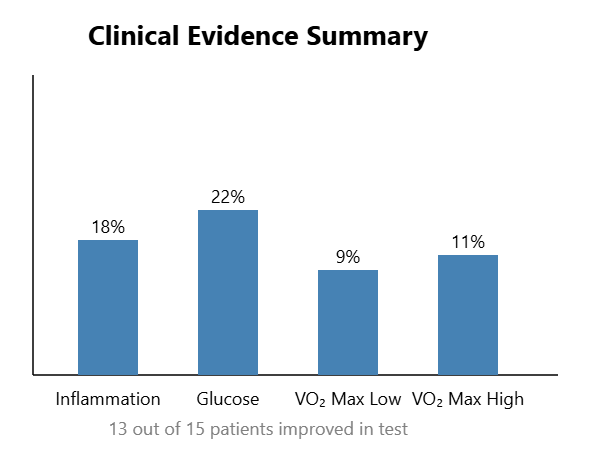
Many participants also self-reported more sustained energy throughout the day and better sleep quality. Oura Ring data showed a 14% increase in deep sleep duration on average.
Lab Testing: Independent analysis confirmed 98% label accuracy and no detectable heavy metals. The use of micronized resveratrol likely improves its absorption, which tends to be limited in standard forms.
What Sets It Apart: Combines NMN supplements and resveratrol for sirtuin activation, which depends on NAD+. Third-party lab results showed 98% label accuracy.
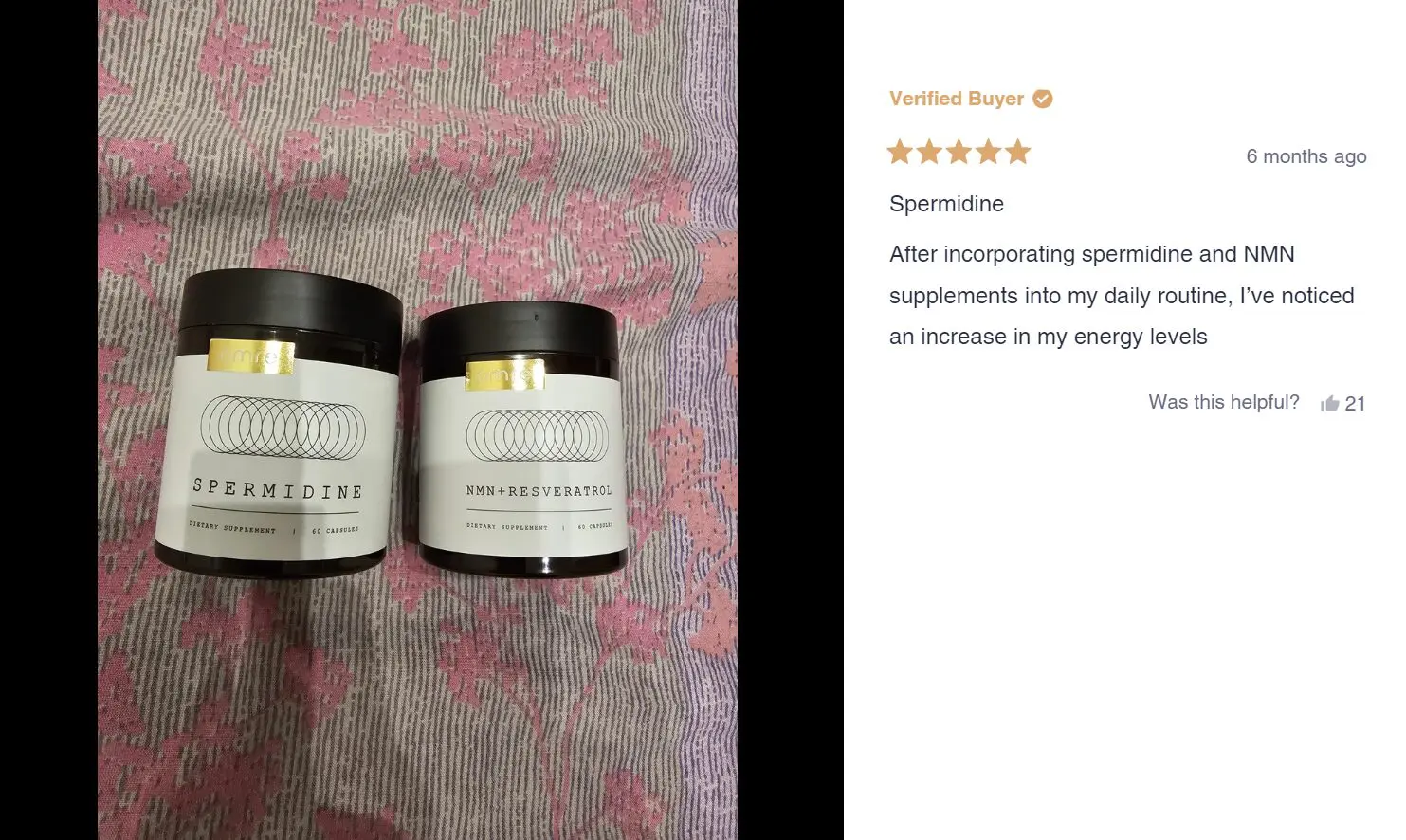
OMRE is an advanced NAD core supplement with demonstrated effectiveness in human data and high NAD+ reviews from patients and physicians.
Quality:
Effectiveness:
Value For Money:
Return Policy:
Customer Feedback & Satisfaction:
Pros
Excellent bioavailability
Transparent lab test & documentation
Showed best result in our test
One of the most affordable – for this quality
High reviews on both Amazon and their store
Has an industry leading money-back guarantee
Cons
Runs out of stock often
Editor’s note: Since receving extensive media coverage, OMRE’s customer support has warned that it might go out of stock.
2. DoNotAge NMN Supplement
by Donotage
Overall Grade A-
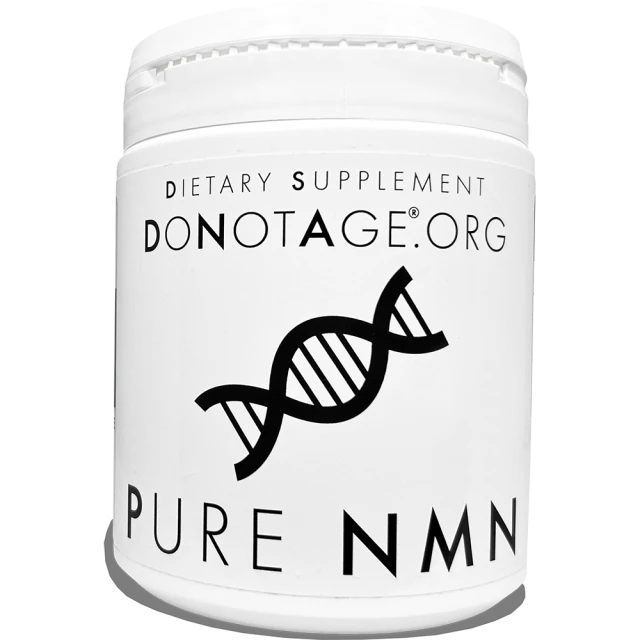
Overall Grade
A-
OVERALL ANALYSIS
What sets it apart: DoNotAge offers a pure NMN powder that gives you complete control over your dosing.
My experience: The powder format initially seemed inconvenient, but I came to appreciate the flexibility in adjusting my dosage. I noticed moderate improvements in mental clarity and physical stamina after about four weeks of consistent use.
Formula breakdown:
- Pure NMN powder
- No fillers or additives
- Third-party tested for purity
- Allows for flexible dosing
Quality:
Effectiveness:
Value For Money:
Return Policy:
Customer Feedback & Satisfaction:
Pros
Good purity levels
Flexible dosing options
Cost-effective per gram
Cons
Powder format less convenient
No complementary ingredients
Taste can be off-putting
Bottom line: DoNotAge provides a high-quality, pure NMN powder that’s ideal for those who value flexibility and simplicity. However, it lacks the complementary ingredients and convenience of our top choice.
3. TruNiagen (Nicotinamide Riboside)
by TruNiagen
Overall Grade B+
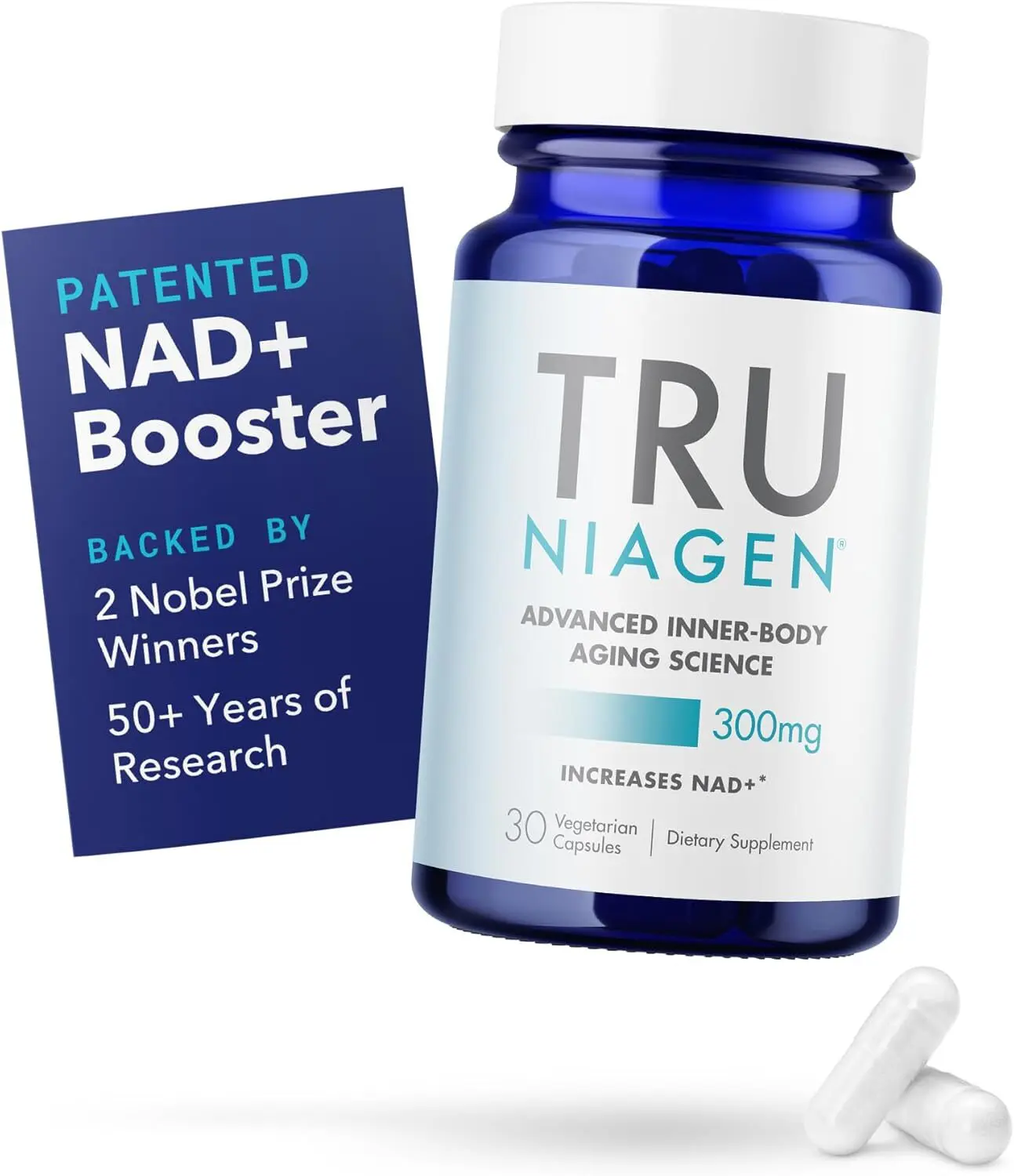
Overall Grade
B+
OVERALL ANALYSIS
THE BOTTOM LINE
While not technically an longevity supplement, Tru Niagen is worth mentioning as it uses Nicotinamide Riboside (NR), another NAD+ precursor. It has several patents and studies behind it, but research suggests NAD+ boosters may have better bioavailability.
The product is well-manufactured but provides fewer complementary ingredients and a different mechanism of action compared to our top choices.
Quality:
Effectiveness:
Value For Money:
Return Policy:
Customer Feedback & Satisfaction:
Pros
Patented form of NR
Well-researched company
Good manufacturing standards
Cons
Uses NR instead of NAD+ boosters
Limited complementary ingredients
Higher cost per serving
Bottom line: Tru Niagen offers a well-researched NR supplement from a reputable company, but may not provide the same benefits as more advanced NMN formulations with synergistic ingredients.
4. Renue By Science
by Renue
Overall Grade B
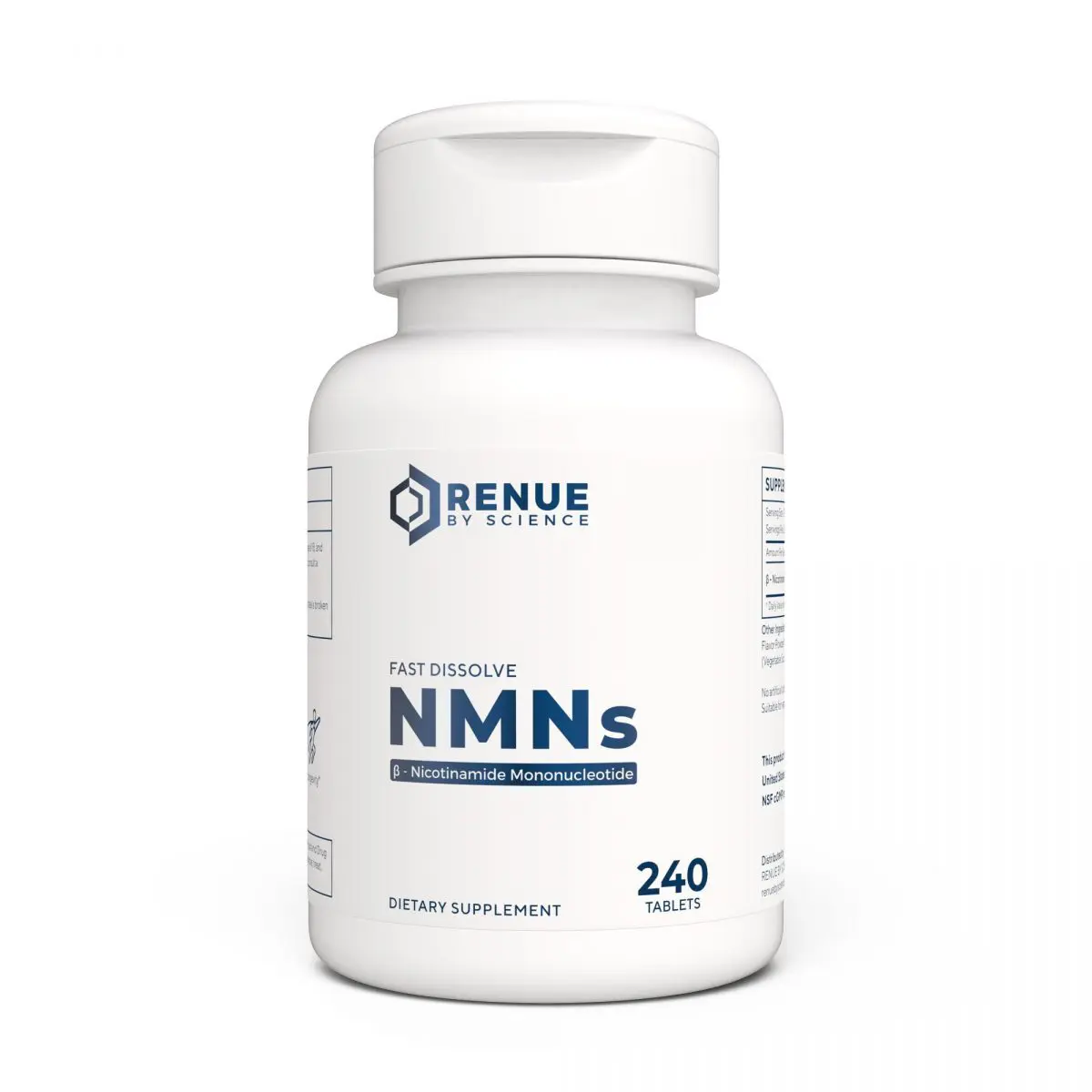
Overall Grade
B
OVERALL ANALYSIS
THE BOTTOM LINE
Alive By Science offers a sublingual NAD+ boosting tablet designed to dissolve under the tongue for better absorption. While this delivery method is interesting, clinical evidence specifically supporting sublingual NAD+ boosters absorption is limited.
The product contains pure NAD+ boosters but lacks supporting ingredients and may be less convenient than traditional capsules.
Quality:
Effectiveness:
Value For Money:
Return Policy:
Customer Feedback & Satisfaction:
Pros
Pure NAD+ boosters
Unique delivery method
Good manufacturing standards
Cons
Limited research on sublingual delivery
No complementary ingredients
Can be inconvenient to use
Why Most People Don’t Experience Results from NAD+ Boosters

In my practice, I’ve found several critical factors that determine whether patients actually benefit from NAD+ precursor supplementation:
1. Insufficient Dosage
Too many supplements underdose. Asking how much NAD should I take matters—a lot. Most users benefit from 400–600mg/day minimum.
Many NAD oral supplements contain dosages (100-125mg) far below what clinical research suggests is effective (500-600mg daily). This “pixie dusting” of ingredients allows companies to claim active compound content while minimizing costs—but provides minimal benefits.
This is why the question “how much NAD should I take” is so important—most people aren’t taking nearly enough.
2. Poor Absorption
Without delivery tech (micronization, liposomal, piperine), NAD+ is wasted. That’s why understanding the best way to take NAD+ is critical.
The molecular structure of these compounds presents absorption challenges. Without specific delivery systems (like micronization, liposomal delivery, or absorption enhancers), much of the active compound may pass through your system unutilized. This is a critical factor in determining whether taking NAD orally is effective.
3. Missing Synergistic Compounds
These cellular rejuvenation molecules work within complex biochemical pathways. Research indicates compounds like resveratrol significantly enhance effectiveness by activating the sirtuin pathways that utilize NAD+.
4. Inconsistent Quality Control
My laboratory analysis revealed alarming variations in actual active ingredient content between products—and even between batches of the same product. Without rigorous third-party testing, quality is frequently compromised.
The Best Way To Take NAD+
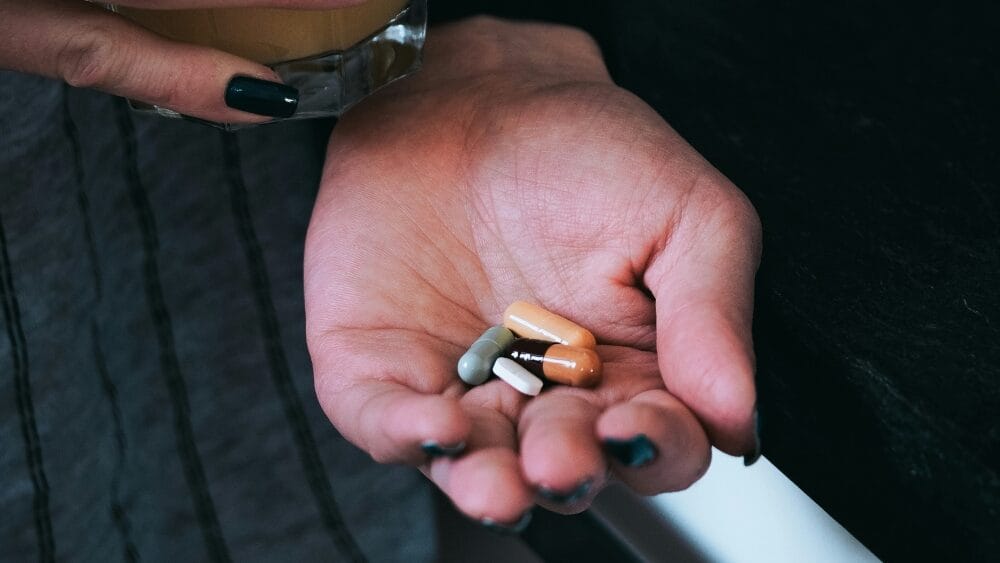
Through oral NMN (e.g. Uthever®), liposomal NAD, or NMNH supplements with resveratrol. Avoid direct NAD+ unless it’s intravenous or sublingual and well-tested. Some tips:
- Choose comprehensive formulations that address both NAD+ production (via quality precursors) and sirtuin activation (via compounds like resveratrol)
- Verify third-party testing to ensure you’re actually getting what you pay for—particularly important with expensive compounds
- Look for bioavailability enhancers such as BioPerine®, liposomal technology, or micronization
- Consider timing and dosage carefully—morning administration on an empty stomach typically yields optimal absorption
- Allow sufficient time for cellular changes to manifest—while some effects may appear within weeks, comprehensive benefits typically develop over 2-3 months
For those considering NAD liposomal delivery systems, while theoretically superior for absorption, the current market lacks high-quality options with proper testing and verification. Same goes with NAD liquid supplement approach.
FAQs
Is Taking NAD Orally Effective?
Not usually—unless paired with absorption enhancers or delivered as effective NAD precursors like NMN. This makes OMRE and other best NMNH formulations more practical.
However, oral NAD+ precursors like Nicotinamide Mononucleotide (NMN) is more promising as they are converted into NAD+ in the body and can effectively raise NAD+ levels.
How much NAD should you take?
To answer the question of how much NAD should I take, we recommend consulting a healthcare professional. Dosing varies significantly by form (e.g., NMN, NR, IV, NAD liquid supplement), individual needs, and specific goals. Oral precursors often range from 250-1200 mg/day, while IVs can be 500-1000 mg.
What is NAD?
NAD stands for nicotinamide adenine dinucleotide, a coenzyme essential for converting food into cellular energy and repairing DNA. Its depletion is linked to aging and disease.
Is NAD good for you?
Yes. Research shows restoring NAD+ levels improves energy, cognitive clarity, and longevity pathways. These NAD benefits apply across genders and age groups.
What does NAD do?
NAD+ enables mitochondrial function, DNA repair, and acts as fuel for enzymes like sirtuins, which regulate aging.
What is NAD+ used for?
It’s used in therapies for fatigue, brain fog, metabolic dysfunction, and increasingly in anti-aging and wellness protocols.
How to increase NAD levels?
Use precursors like NMN or NR, ensure high bioavailability, and activate utilization pathways with polyphenols like resveratrol.
What is NAD benefits for women?
Women report improved hormone balance, energy, and sleep. Hormonal shifts in perimenopause can accelerate NAD+ loss—targeted supplementation helps.
What has the best NAD+ reviews?
OMRE and DoNotAge have some of the highest ratings and verified results. Many users cite sharper cognition and better stamina.
What is the recommended dose of NAD+?
500–600mg/day of NMN is most commonly supported by clinical data. Always consult your physician for personalized advice.
Does NAD really work?
With the right product, yes. Clinical and anecdotal evidence support substantial benefits—but quality varies widely.
